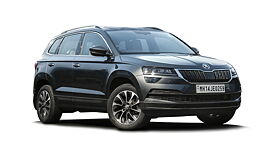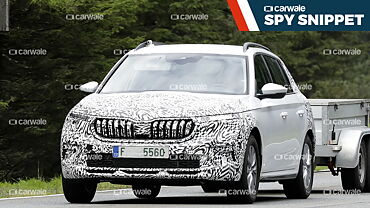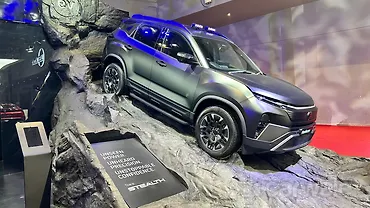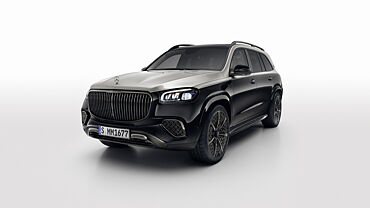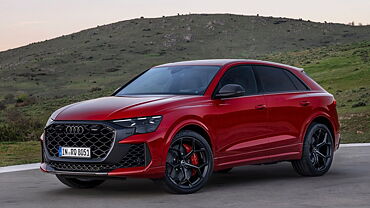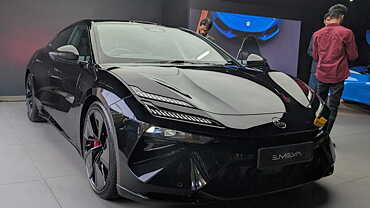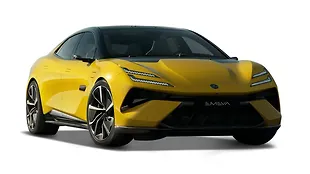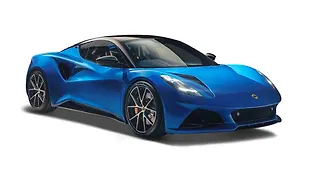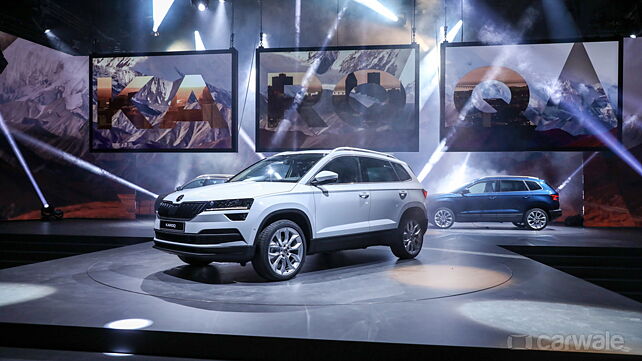
Skoda pulled off the covers of the spiritual successor to the Yeti at a press conference in Stockholm. Christened as the Karoq, the SUV derives its name as a portmanteau derived from the language of the Alaskan people. The name combines two Aleut words - Kaa Raq (car) and Ruq (arrow). The five-seater joins the bigger Kodiaq in the Czech carmaker’s SUV line-up. The Karoq carries the ‘crystalline elements’ SUV design language from Skoda. Let’s have a detailed look through a photo gallery.

The Karoq is based on the same versatile MEB platform as the Kodiaq, Seat Ateca, and VW Tiguan, albeit with a shorter wheelbase. It measures 4,382mm in length, 1,841mm in width and 1,605mm in height with a wheelbase of 2,638mm.

All the Kodiaq’s design elements are visible in the Karoq. It gets the new moustache grille, sleek LED headlights, and a silhouette similar to the Kodiaq. At the back, the new signature Skoda arrow-shaped tail lamps add character.

The rear is very similar to that of the Seat Ateca with all the creases and curves. The roof rails and black body cladding adds to the SUV impression of the Karoq. The stylish 17-inch wheels come as standard, whereas increasing it up to 19-inches can be an optional extra.

The Yeti was a very practical car, and Karoq promises to be the same. The boot capacity of 521litres can be increased to 1630litres with seats folded. Then, there are the optional flexible Varioflex seats converting boot space from 479litres to 588litres.

The new Karoq’s interiors combine practicality with quality interiors. But the standardisation of the Skoda models is visible with cabin features similar to the other vehicles in the Czech carmaker’s line-up.

A large infotainment screen dominates the dashboard. The stacked centre console houses HVAC control and a large storage space. Steering mounted controls and the digital instrument cluster lookclassy.

The cabin comes loaded with six airbags, electrically adjustable front seats, smartphone connectivity, a plethora of storage spaces, a host of connectivity options, and LED ambient lighting with 10 colours on door trims as well as on dashboard.

Powertrain wise, the Karoq gets two petrol and three diesel engine options. The gasoline options are 1.0-litre and 1.5-litre TSI turbocharged unit while the oil burners include a 1.6-litre and 2.0-litre mill and gets a seven-speed DSG and AWD as standard.

The other engines can also be had with a six-speed manual as a part of the package. ABS and EBD will be standard while the automatic model gets a stability programme and traction control system as standard.

There are five driving modes as well - normal, sport, eco, individual and snow (4x4). Driving aids include park assist, lane assist and traffic jam assist, blind spot detect, front assist with the predictive pedestrian protection and emergency assist.

The Karoq is the second addition to the Mladá Boleslav-based carmaker’s portfolio. It will be followed by another SUV after the Karoq goes on sale in the second half of 2017.

Skoda will bring the new Karoq to our shores, given the huge demands for SUVs in India. It will be positioned above the Octavia in the D-Segment and take on the likes of Hyundai Tucson. Expected pricing for the Karoq ranges between Rs 19 lakh to Rs 25 lakh.

